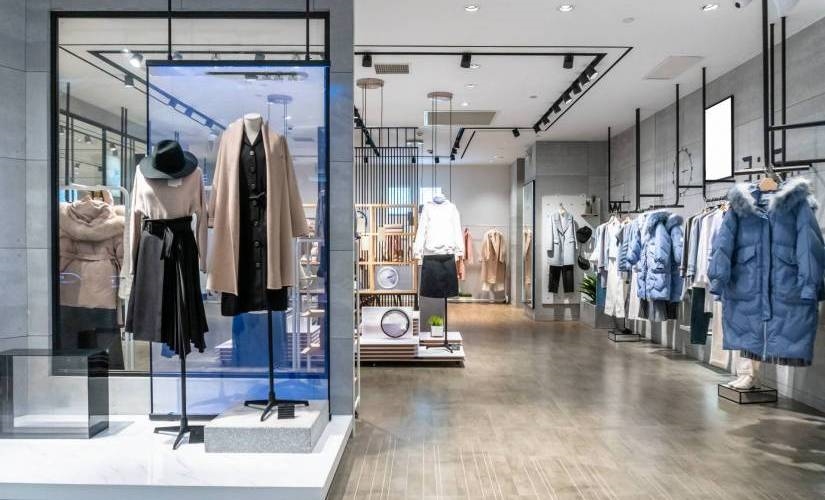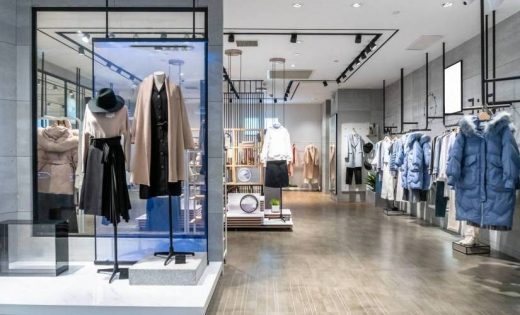The Latest Battle for Consumer Attention: Blurring the Lines Between Retailers and Brands
The Latest Battle for Consumer Attention: Blurring the Lines Between Retailers and Brands

In a landscape where it’s increasingly more difficult to stand out among the Amazons and the Walmarts of the world, a new trend is emerging. Brands and retailers are rethinking their business models. Here is the latest battle for consumer attention and the blurring of the lines between retailers and brands.
Retailers are expanding from just housing and selling brands, to creating their own, exclusive private-label brands.
What we are seeing in response to this need for differentiation is two-fold. Retailers—mass merchants, especially—are expanding from just housing and selling brands, to creating their own, exclusive private-label brands. And brands, which typically sell their items through retailers, are taking a direct-to-consumer approach, launching flagship experience stores to cater to consumers.
For the purpose of this article, “brands” are essential manufactures that design and create products.
They’ve traditionally relied on retail partners to sell their products. On the other hand, “retailers,” have traditionally been resellers of brand merchandise. Below we do a deep dive into how the lines are beginning to blur, as companies fight for consumer time, attention and wallets. We’ll examine the opportunities and challenges of both the “brand as retailer” approach as well as “retailer as brand,” and look at companies doing it right.
Brand As Retailer
It’s no secret that consumers crave high-fidelity experiences with brands. That’s precisely why brands like Lego, Samsung, and others, are building out “experience centers” of sorts, allowing consumers to come into a store to touch, feel and try out products.
Associates at experience centers are trained on the company’s values and can tell you in detail about the products, the brand story as well as the social and environmental impact of the products the company manufactures and sells.
Lego’s newest stores focus on the experiential aspect of retail to get consumers in and buying.
One brand that is at the forefront of this trend is Lego, which is on track to have over 140 stores globally by the end of 2019. Traditionally, Toy-R-Us was Lego’s leading distribution channel in the U.S. The store would dedicate entire aisles to the Lego family of products.
But after the retailer filed for bankruptcy in September of 2017, Lego realized it needed to think outside of the box. It already had a small network of flagship retail stores on the Vegas Strip, New York City, and in other marquee locations, however, the overall contribution of these stores to company revenue was minuscule. Lego’s newest stores focus on the experiential aspect of retail to get consumers in and buying.
Stores are filled with interactive Lego stations, with various building exercises for patrons to immerse themselves in. It’s not about the hard sell. All stores have what Lego calls “Brick Specialists,” who are knowledgable associates there to help you find and select the Lego toys that fit your needs best. A digital box in stores allows patrons to scan a boxed Lego set and see the model come to life in 3D. Each store also has hands-on play opportunities.
In addition to the staples that can be found in every location, every Lego store has its own special experience. The company’s store in Denmark, for example, has a Mosaic Maker, which uses augmented reality to capture a person’s photo and then creates individualized instructions on which bricks one needs as well as how to build your own self-portrait using nothing but Legos. The Lego store in London has a 20-foot replica of Big Ben that took Lego employees 2,280 hours to build.
Lego stores are truly experience centers that draw people in. They are about a lot more than just coming in to buy a product. Stores help people build memories with their family and friends and build affinity with the Lego brand.
Retailer As Brand
It’s hard to build affinity as a retailer since you are competing with many other stores, many of which sell the same exact items at similar price points to you. Differentiation can be hard when Amazon boasts two-day shipping and carries just about any product one might need. So, how does a retailer differentiate?
Many retailers have launched private labels to differentiate. Well-known examples include Costco’s Kirkland private label, which is valued at $ 75 billion. Kroger’s Simple Truth private label has recently topped $ 1 billion in sales. Children’s clothing brand Cat & Jack contributes more than $ 2B in revenue to the bottom line of Target. And according to the Private Label Manufacturers Association, one out of every four products sold in the United States is private label or store brands.
The idea is that these private labels build affinity with consumers, and because they aren’t available elsewhere, they drive traffic into stores. And the numbers bare out. According to Food Navigator USA, 85% of consumers trust private label brands and 81% buy private label products during every shopping trip. And, 53% of consumers say they shop at a store specifically for its private brand.
In 2020 and beyond we will continue to see growth in private labels among large retailers, specifically with regards to organic, sustainable, and local goods.
The Fight for Differentiation
Competition is really heating up, as consumers have a myriad of stores and online channels at their disposal. Amazon today accounts for 50% of product searches on the web. It’s fast and convenient.
But that doesn’t mean that there’s no room for other brands to also participate and win in the commerce game. In fact, the smartest brands and retailers are going to find ways to offer consumers something exclusive—an experience or a product—that they can’t get elsewhere, not even on Amazon, while those that continue to rely on their traditional models of sell, sell, sell, will be gone, gone, gone.
The post The Latest Battle for Consumer Attention: Blurring the Lines Between Retailers and Brands appeared first on ReadWrite.
(51)


